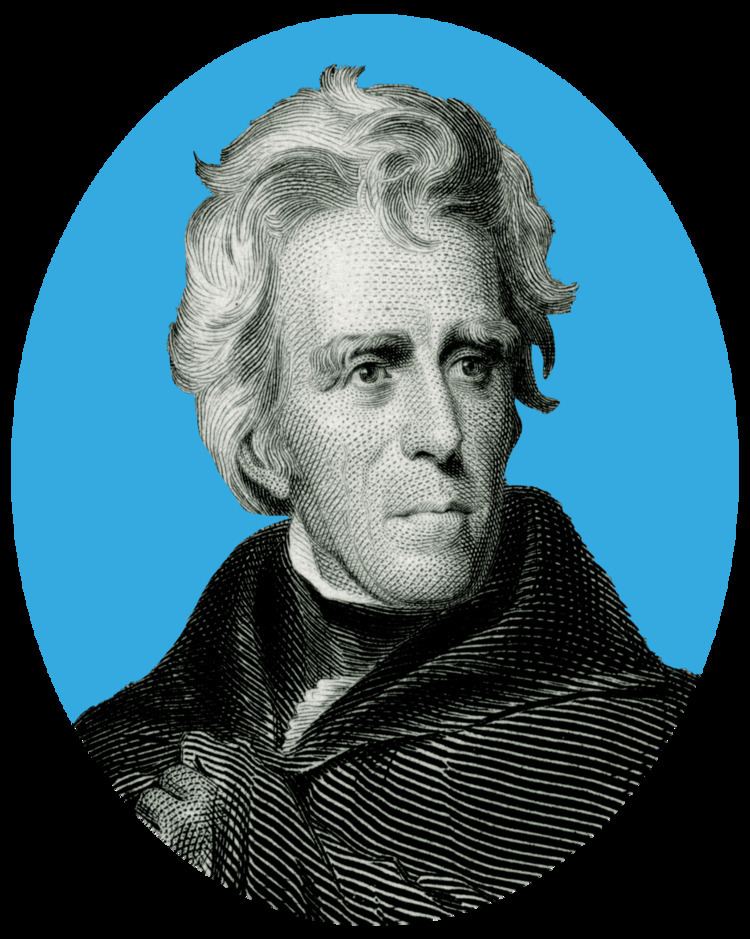Date(s) May 21–23, 1832 Total delegates 283 | ||
 | ||
Venue "The Athenaeum", (first), St. Paul and East Lexington StreetsWarfield's Church (First Universalist) Vice Presidential nominee Martin Van Buren of New York | ||
The 1832 Democratic National Convention was held from May 21 to May 23, 1832, in Baltimore, Maryland. This was the first national convention of the Democratic Party of the United States; it followed presidential nominating conventions held previously by the small minority Anti-Masonic Party (in September 1831) and the National Republican Party (in December 1831). The purpose of the convention was to choose a running mate for incumbent President Andrew Jackson of Tennessee, rather than the previous methods of using a caucus of Congressional representatives and senators. The delegates nominated former Secretary of State Martin Van Buren (of New York) for Vice President to replace and succeed the earlier incumbent John C. Calhoun of South Carolina (whom Jackson had fallen out with over the nullification controversy), and endorsed Jackson's reelection.
Contents
Background
In the summer of 1822, "Richmond Junto" leader Thomas Ritchie of Virginia began raising the idea of a national convention to resolve the issue of nomination; ultimately, the Congressional nominating caucus was appealed to by the devotees of Treasury Secretary William H. Crawford's candidacy. Following that defeat in the election of 1824, early in 1827, Van Burn privately made the argument to Richie for an exclusive national convention of Republicans to ensure Jackson's nomination. However, it did not immediately come to fruition while state conventions and legislatures took up Jackson as their presidential candidate for the election of 1828 with Vice President John C. Calhoun as his running mate. Such a type of national convention would occur after the election.
In 1830, Calhoun had fallen out of President Jackson's favor in part from a letter written by Crawford that stated that Calhoun,as Secretary of War under President James Monroe, pushed for a reprimand of then-General Jackson ofr his actions in the 1818 invasion of Florida. The Petticoat affair in which Calhoun's wife, Floride, was a central figure further alienated Jackson from the Vice President and his supporters. The final blow to the relationship came when Calhoun sank Van Buren's nomination as Minister to Great Britain by casting a tie-breaking vote in the United States Senate. Calhoun resigned as Vice President on 28 December 1832 (seven weeks after the presidential election) and became a Senator from South Carolina, where he continued to be a proponent of the doctrine of nullification in opposition to Jackson.
The proposal for the convention began with members of Jackson's "Kitchen Cabinet", his coterie of informal advisers and confidants. Major William Berkeley Lewis wrote on May 25, 1831, to Amos Kendall, who was then in New Hampshire. He proposed that the New Hampshire legislature call for a national gathering of Republican supporters of the Jackson administration to nominate a candidate for the vice presidency, and asked Kendall to pass the idea to Isaac Hill. After the New Hampshire legislature issued the call for a general convention, the Washingoton Globe (the principal Jacksonian newspaper) seconded the recommendation on July 6, 1831:
"The recommendation of a Convention at Baltimore to nominate a candidate for the Vice-Presidency deserves a serious consideration. It is probably the best plan which can be adopted to produce entire unanimity in the Republican party, and secure its lasting ascendancy."Lewis later recalled warning former Secretary of War and delegate John Eaton the day before the convention not to vote for anyone there except Van Buren unless he was prepared to "quarrel with the General [Jackson]."
Proceedings
The convention was called to order by Frederick A. Sumner of New Hampshire, who said of the origins and purpose of the convention:
Delegates from all states except Missouri were present. Governor Robert Lucas of Ohio served as the chairman and convention president. Peter Vivian Daniel, James Fenner, John M. Barclay, and Augustin Smith Clayton were chosen as convention vice presidents. John Adams Dix was appointed secretary at the first meeting, with other additional secretaries thereafter. A resolution was passed by the convention requiring two-thirds support of the delegates for a nomination.
Martin Van Buren was nominated for the vice presidency after he won more than two-thirds of the total delegates' votes. The convention endorsed the prior nominations in various areas of the United States of Jackson for the presidency. The convention concluded by adopting a resolution calling for an address or report from the delegations to their constituents.
An address by the Republican delegates of New York gave a history of previous national political activity in the United States. They denounced the National Republicans as Federalists under a new designation and they denounced the Nullifiers while they declared that their own party held the middle ground between the positions of the other two. The address described what they claimed were political similarities between Andrew Jackson and Thomas Jefferson and it defended the policies of Jackson's administration. It characterized Van Buren as a strict constructionist and welcomed his nomination.
Election
Andrew Jackson and Martin Van Buren defeated their main competitors, Henry Clay and John Sergeant of the National Republican Party, by a large electoral vote margin in the election of 1832. The electors of Pennsylvania supported Jackson, but cast their votes for William Wilkins for the vice presidency.
